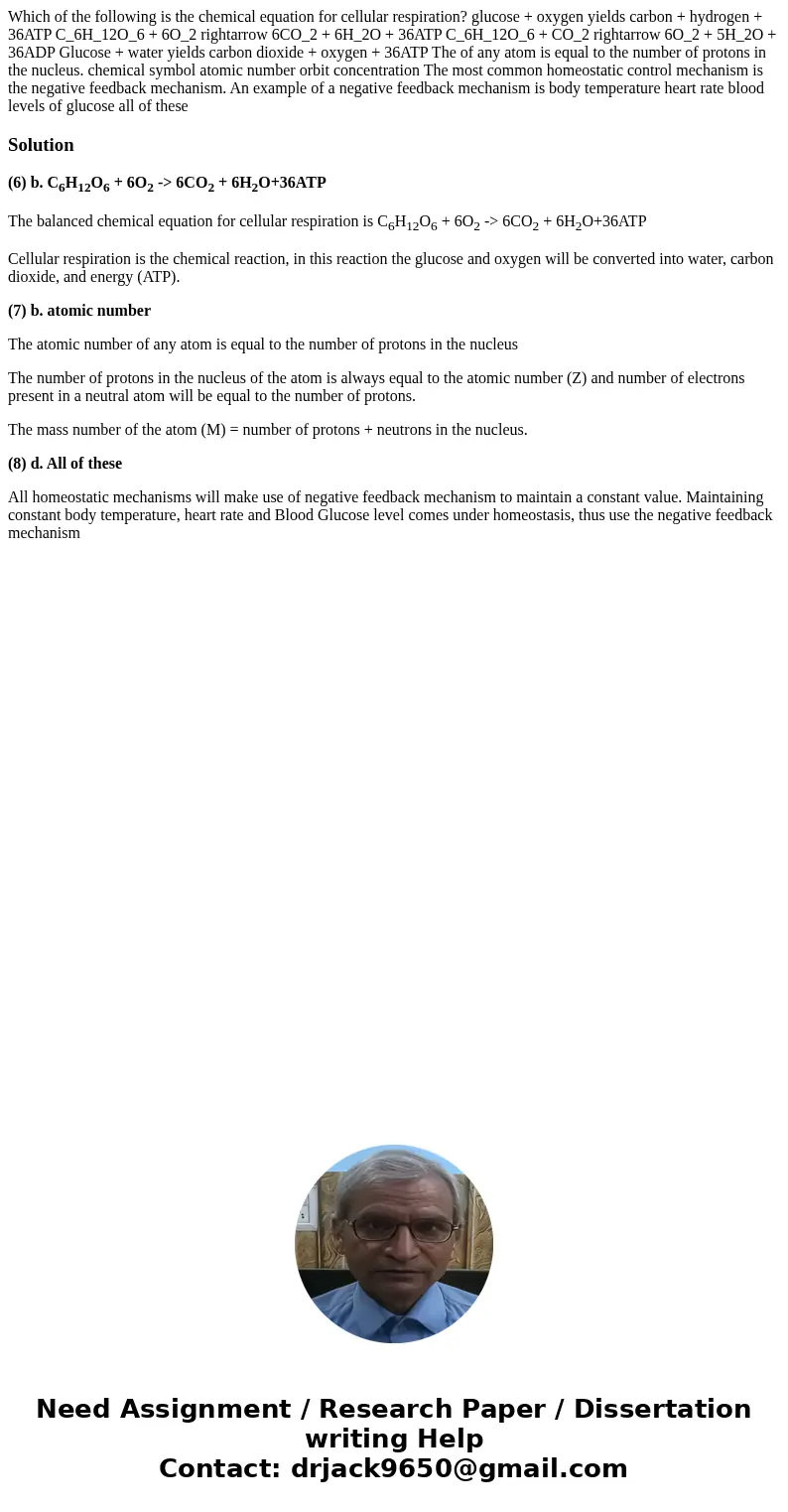Which of the following is the chemical equation for cellular
Solution
(6) b. C6H12O6 + 6O2 -> 6CO2 + 6H2O+36ATP
The balanced chemical equation for cellular respiration is C6H12O6 + 6O2 -> 6CO2 + 6H2O+36ATP
Cellular respiration is the chemical reaction, in this reaction the glucose and oxygen will be converted into water, carbon dioxide, and energy (ATP).
(7) b. atomic number
The atomic number of any atom is equal to the number of protons in the nucleus
The number of protons in the nucleus of the atom is always equal to the atomic number (Z) and number of electrons present in a neutral atom will be equal to the number of protons.
The mass number of the atom (M) = number of protons + neutrons in the nucleus.
(8) d. All of these
All homeostatic mechanisms will make use of negative feedback mechanism to maintain a constant value. Maintaining constant body temperature, heart rate and Blood Glucose level comes under homeostasis, thus use the negative feedback mechanism

 Homework Sourse
Homework Sourse